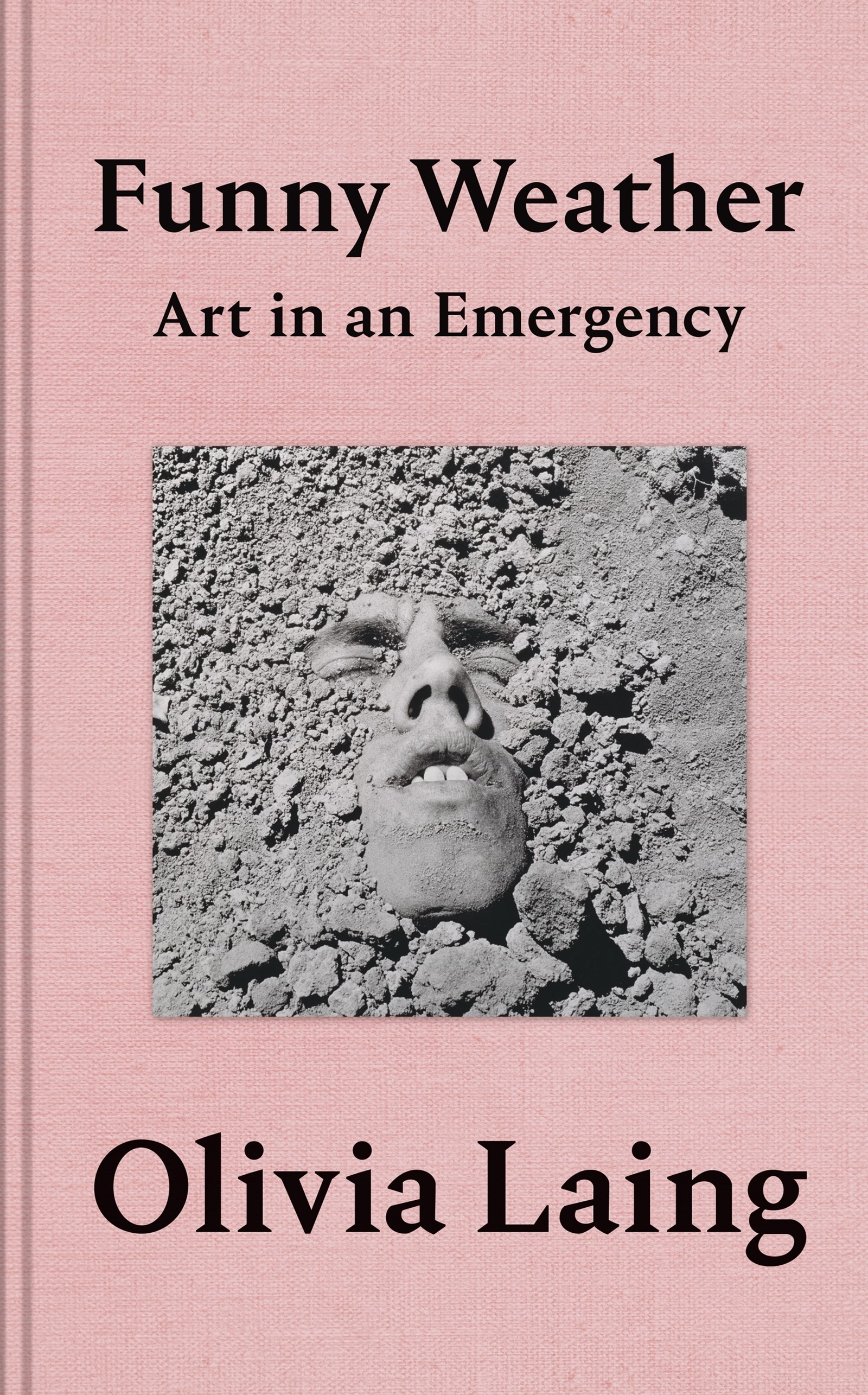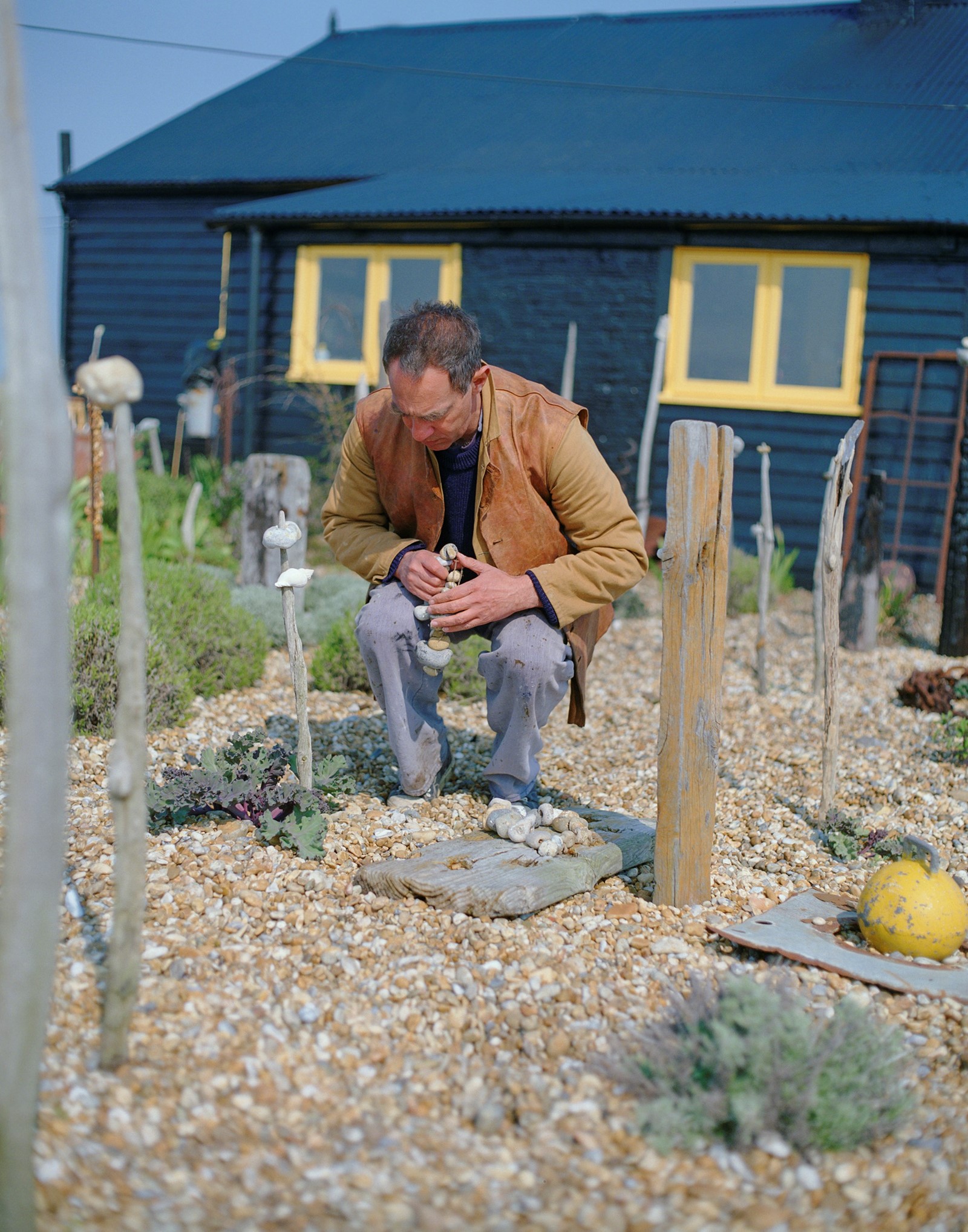Here, as part of our #CultureIsNotCancelled campaign, we present an extract from Olivia Laing’s new book, Funny Weather: Art in an Emergency – a collection of essays, reviews, interviews and columns by the writer, novelist and critic from the 2010s – which is released today. Titled Paradise, this essay sees Laing write about the artist and filmmaker Derek Jarman’s own earthly paradise, his beloved garden at Prospect Cottage, the Dungeness home he spent the last years of his life in after being diagnosed as HIV-positive. In an interview today on AnOthermag.com – in which Laing talks Funny Weather, isolation and the necessity of art in an emergency – she tells of her reaction to finding out that the recent campaign to save Jarman’s Prospect Cottage had been successful. “I bit my nails all through the last day,” she tells Jack Moss, “when Alice at the Art Fund emailed to say they’d made it I burst into tears.”
A good omen, at last. I was in my garden, trimming dead leaves from the hellebores. The sky was very blue, and as I looked up a little plane flew overhead and drew a smiling face. The smile lingered after the other features had dissolved, a Cheshire-cat grin, spreading south.
Is gardening an art form? If it is it’s the kind of art I like, bedded in the material, nearly domestic, subject to happenstance and weather. Most of the winter had been very bleak. The smile was an aberration. The days were short and grey and riddled with bad news. I developed a habit of spending Sundays with seed catalogues and lists of old roses, plotting floral fireworks that wouldn’t go off for months. Such consolations are nothing new. In her diary of 1939, Virginia Woolf records hearing Hitler on the radio. Her husband Leonard was in the garden he’d painstakingly constructed at Monk’s House, their damp green cottage in Rodmell, East Sussex. “I shan’t come in,” he shouted. “I’m planting iris, and they will be flowering long after he is dead.”
It was true. Gardening situates you in a different kind of time, the antithesis of the agitating present of social media. Time becomes circular, not chronological; minutes stretch into hours; some actions don’t bear fruit for decades. The gardener is not immune to attrition and loss, but is daily confronted by the ongoing good news of fecundity. A peony returns, alien pink shoots thrusting from bare soil. The fennel self-seeds; there is an abundance of cosmos out of nowhere.
No one wrote better about this paradisiacal aspect of gardening than the plantsman, film-maker, writer and painter Derek Jarman. The last alchemist, his partner Keith Collins called him, magicking an oasis on the desolate beach of Dungeness. He made his famous garden shortly after being diagnosed HIV-positive, tending an abundance of life in the face of death. In between seed catalogues, I spent the beginning of the year writing a new introduction to Jarman’s magical, harrowing diary, Modern Nature, first published in 1991.

When I finished, I decided to make a pilgrimage to Derek’s grave. I didn’t want to Google where it was. I wanted to navigate by memory. Was it Lydd? No. Surely Romney? I walked gingerly across damp churchyard grass, scouting under yews. Graves look new for far longer than you might expect. It takes more than a century before the greenery-yallery encrustations of lichen become established.
In the end I succumbed to the iPhone. St Clement’s Churchyard, Old Romney. I drove through a liquid landscape, smudging and pooling at the edges like ink on wet paper. The church was very old. There was Derek’s grave, just his signature carved into stone. I should have brought flowers, taking my cue from the narrator of his last film Blue: ‘I place a delphinium, blue, upon your grave.’ Hyacinths, or maybe mimosa, Derek’s grandmother’s favourite, banishing the dregs of winter with its puffs of cheering yellow.
Before I left, I ducked into the church. It was beautifully unrestored, a hodgepodge of medieval stone carving and Georgian decoration. The tiled floor was wildly uneven, marking the long passage of feet. The ragstone walls were lumpy. But the best thing was the box pews, which had been painted a deliciously unlikely ointment-pink. Here’s another kind of art I like: the anonymous, the cobbled together, the hand-medown, the postscript; collaborations between strangers that marry jubilantly, that don’t quite fit. It turned out the pews weren’t a rare example of Florentine style in the Kentish marshes. They’d been painted by Disney for the 1963 film Dr Syn. The parishioners liked them so much they had decided to keep them, a campy flash of paradise.
It was so exactly the kind of random occurrence Derek seized on in his films. He directed just like he gardened, making hay with the spontaneous and unplanned. Is art resistance? Can you plant a garden to stop a war? It depends how you think about time. It depends what you think a seed does, if it’s tossed into fertile soil. But it seems to me that whatever else you do, it’s worth tending to paradise, however you define it and wherever it arises.
Funny Weather: Art in an Emergency by Olivia Laing, published by Picador, is out now.
This extract is published with permission of the author and Picador.
